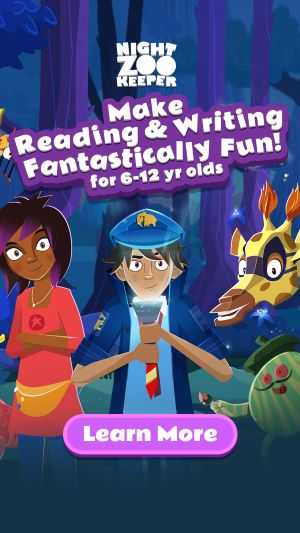Inferential Comprehension
What is inference in reading comprehension?

Inference instruction involves getting young students to “read between the lines”, where they learn to make educated guesses based on the text and background knowledge. Like reading detectives, learners uncover hidden meanings and connections in stories, improving their reading comprehension while fostering a love for reading.
This particular reading ability requires some prior knowledge, so students’ understanding of basic reading concepts must be established before they dive into inferential comprehension.
To help your child develop this reading skill, we’ve gathered some expert tips, activities, and resources!

How can we infer meaning?
When reading a text, there are several comprehension strategies that can help children infer meaning beyond just the actual words on the page. One way is to consider the background knowledge, including the time period, cultural background, and author's intentions, which can provide important clues to understanding the text's meaning.
Additionally, analyzing the tone of the text, can provide insight into the author's attitude or perspective. The use of figurative language, such as metaphors or similes, plays a role in creating deeper meanings and connections within the text. Children may also be able to apply inferencing and inference-making when examining the characters' relationships and interactions, providing context for the text's themes and underlying messages.
It's important that your child approaches each text with an open and curious mind. They must be willing to read between the lines and consider multiple interpretations. By using these strategies to infer meaning in a text, they can gain a deeper understanding of the author's message and the context in which it was written, developing their critical thinking skills.
Activities to teach inference skills
1. Real Life Scenarios
Explain that we use inference skills in real life. Take informational texts or scenarios and get your child to practice their inference-making skills by drawing conclusions from the information given to them. Here are two different examples:
Scenario A: Someone is late for school or work.
Inference: We can assume they overslept or the traffic slowed them down.
Scenario B: Someone has a stain on their shirt after lunch.
Inference: We can assume they dropped some of their food whilst eating.
2. Story Pictures
Practice inferring from pictures of a story. Children can effectively infer meaning from images without the text complicating matters. You can use wordless books for this activity. Progress this by asking children to make multiple inferences about a single picture. Writing captions is another excellent activity when working with images. This is also a great activity to develop critical thinking skills - when your child learns how to interpret an image, they’ll find the process of text interpretation easier.
3. Thought Bubbles
Writing in thought bubbles on top of the text can be a great way to explain what characters are thinking in a particular part of a story.
4. Scenario Cards
Children need lots of practice inferring meaning as it is tricky to master. You can do this by using scenario cards every day. These all have a different simple scenario written on them. Read one to your children and ask them the following inferential questions:
- What do the details tell you about the situation?
- What clues helped you?
- How are the details in the scenario connected to your idea?
5. Character, Trait, Evidence
This activity challenges children to infer a trait in a character by what they say and do without explicit instructions stated in the narration of the story. To complete this activity, children should be given a template with three columns: Character, Trait, and Evidence. They will then make notes based on the character speech and dialogue tags used by the author.
An example of this:
- Character: Sam the Spying Giraffe
- Trait: Funny
- Evidence: "Why do giraffes have long necks? Because their feet smell," chuckled Sam.
Free resource
You can practice reading comprehension skills with your children by downloading this fun activity pack based on the first book in the Night Zookeeper series.
Note: this is the same PDF available across all the Reading Comprehension section.

How Night Zookeeper can help

Our reading & writing program for kids makes learning fantastically fun by turning skills development into a game!
Access thousands of award-winning educational resources, including interactive lessons focused on reading comprehension and writing composition, word games, and skill challenges that your child will love!
Sign up today and get a FREE 7 day trial.
Related content


Make Reading & Writing Fantastically Fun!
- Award-winning reading & writing program for kids
- Improves spelling, grammar, punctuation & vocabulary
- Over 1,000 different learning games and activities



